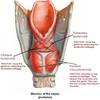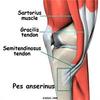Block 6 Flashcards
(506 cards)
Innervation of pec major
Lateral pectoral nerve
Action of pec major
Adductor and medial rotator of humerus
Which of the following methods is most effective at destroying spores of the tubercle bacilli?
Immersion in 0.5% chlorhexidine in alcohol
Immersion in aqueous iodine
Heating in a hot air oven
Immersion in 0.1% sodium hypochlorite
Autoclaving
The tubercle bacilli has a waxy outer membrane that renders it more resistant to sterilisation and cleaning methods. Whilst 0.1% sodium hypochlorite will destroy many microbes it is less reliable in destroying tubercle bacilli. Hot air ovens provide less reliable pathogen destruction than autoclaving, but may be indicated in situations where the equipment is sensitive to the autoclaving process. From the list of options above, autoclaving will most reliably destroy tubercle bacilli.
Def: cleaning
Removal of physical debris
Def: disinfection
Reduction in number of viable organisms
Sterilisation
Removal of all organisms and spores
Sterilisation technique options
Autoclaving
Glutaraldehyde solution
Ethylene oxide
Gamma irradiation
A 59 year old man is undergoing an extended right hemicolectomy for a carcinoma of the splenic flexure of the colon. The surgeons divide the middle colic vein close to its origin. Into which of the following structures does this vessel primarily drain?
Superior mesenteric vein
Portal vein
Inferior mesenteric vein
Inferior vena cava
Ileocolic vein
The middle colonic vein drains into the SMV, if avulsed during mobilisation then dramatic haemorrhage can occur and be difficult to control.
A 65 year old male with known nasopharyngeal carcinoma presents with double vision over a few weeks. On examination he is found to have left eye proptosis and it is down and out. He reports pain on attempting to move the eye. There is an absent corneal reflex. What is the most likely diagnosis?
Posterior communicating artery aneurysm
Cavernous sinus syndrome
Optic nerve tumour
Migraine
Cerebral metastases
Cavernous sinus syndrome is most commonly caused by cavernous sinus tumours. In this case, the nasopharyngeal malignancy has locally invaded the left cavernous sinus. Diagnosis is based on signs of pain, opthalmoplegia, proptosis, trigeminal nerve lesion (opthalmic branch) and Horner’s syndrome.
Medial relations of the cavernous sinus
Pituitary fossa
Sphenoid sinus
Lateral relations of the cavernous sinus
Temporal bone

Lateral wall components of the cavernous sinus
(from top to bottom:)
Oculomotor nerve
Trochlear nerve
Ophthalmic nerve
Maxillary nerve
Contents of the cavernous sinus
(from medial to lateral:)
Internal carotid artery (and sympathetic plexus)
Abducens nerve
Blood supply of the cavernous sinus
Ophthalmic vein, superficial cortical veins, basilar plexus of veins posteriorly.
Drains into the internal jugular vein via: the superior and inferior petrosal sinuses
In patients with an annular pancreas where is the most likely site of obstruction?
The first part of the duodenum
The second part of the duodenum
The fourth part of the duodenum
The third part of the duodenum
The duodeno-jejunal flexure
The pancreas develops from two foregut outgrowths (ventral and dorsal). During rotation the ventral bud and adjacent gallbladder and bile duct lie together and fuse. When the pancreas fails to rotate normally it can compress the duodenum with development of obstruction. Usually occurring as a result of associated duodenal malformation. The second part of the duodenum is the commonest site.
Theme: Chest pain
A.Achalasia
B.Pulmonary embolus
C.Dissection of thoracic aorta
D.Boerhaaves syndrome
E.Gastro-oesophageal reflux
F.Carcinoma of the oesophagus
G.Oesophageal candidiasis
Please select the most likely cause for chest pain for the scenario given. Each option may be used once, more than once or not at all.
41.A 43 year old man who has a long term history of alcohol misuse is admitted with a history of an attack of vomiting after an episode of binge drinking. After vomiting he developed sudden onset left sided chest pain, which is pleuritic in nature. On examination he is profoundly septic and drowsy with severe epigastric tenderness and left sided chest pain.
A 22 year old man is admitted with severe retrosternal chest pain and recurrent episodes of dysphagia. These occur sporadically and often resolve spontaneously. On examination there are no physical abnormalities and the patient seems well.
An obese 53 year old man presents with symptoms of recurrent retrosternal discomfort and dyspepsia. This is typically worse at night after eating a large meal. On examination there is no physical abnormality to find.
Boerhaaves syndrome
In patients with Boerhaaves the rupture is often on the left side. The story here is typical. All patients should have a contrast study to confirm the diagnosis and the affected site prior to thoracotomy.
Achalasia
Achalasia may produce severe chest pain and many older patients may undergo cardiac investigations prior to endoscopy.
Endoscopic injection with botulinum toxin is a popular treatment (although the benefit is not long lasting). Cardiomyotomy together with an antireflux procedure is a more durable alternative.
Gastro-oesophageal reflux
Patients with GORD often have symptoms that are worse at night. In this age group an Upper GI endoscopy should probably be performed.
Tearing interscapular pain
Discrepancy in arterial blood pressures taken in both arms
May show mediastinal widening on chest x-ray
Dissection of thoracic aorta
Spectrum of oesophageal motility disorders
Caused by uncoordinated contractions of oesphageal muscles
May show “nutcracker oesophagus” on barium swallow
Symptoms include dysphagia, retrosternal discomfort and dyspepsia
Diffuse oesophageal spasm
Common cause of retrosternal discomfort
Usually associated with symptoms of regurgitation, odynophagia and dyspepsia
Symptoms usually well controlled with PPI therapy
Risk factors include obesity, smoking and excess alcohol consumption
Gastro-oesphageal reflux
Spontaneous rupture of the oesophagus
Caused by episodes of repeated vomiting often in association with alcohol excess
Typically there is an episode of repetitive vomiting followed by severe chest and epigastric pain
Diagnosis is by CT and contrast studies
Treatment is surgical; during first 12 hours primary repair, beyond this usually creation of controlled fistula with a T Tube, delay beyond 24 hours is associated with fulminent mediastinitis and is usually fatal.
Boerhaaves syndrome
Difficulty swallowing, dysphagia to both liquids and solids and sometimes chest pain
Usually caused by failure of distal oesphageal inhibitory neurones
Diagnosis is by pH and manometry studies together with contrast swallow and endoscopy
Treatment is with either botulinum toxin, pneumatic dilatation or cardiomyotomy
Achalasia
Theme: Nerve Injury
A.Median nerve
B.Ulnar nerve
C.Radial nerve
D.Musculocutaneous nerve
E.Axillary nerve
F.Anterior interosseous nerve
G.Posterior interosseous nerve
For each scenario please select the most likely underlying nerve injury. Each option may be used once, more than once or not at all.
44.A 10 year old boy is admitted to casualty following a fall. On examination there is deformity and swelling of the forearm. The ability to flex the fingers of the affected limb is impaired. However, there is no sensory impairment. Imaging confirms a displaced upper forearm fracture
A well toned weight lifter attends clinic reporting weakness of his left arm. There is weakness of flexion and supination of the forearm.
An 18 year old girl sustains an Holstein-Lewis fracture. Which nerve is at risk?
Anterior interosseous nerve
Forearm fractures may be complicated by neurovascular compromise. The anterior interosseous nerve may be affected. It has no sensory supply so the defect is motor alone.
Musculocutaneous nerve
Musculocutaneous nerve compression due to entrapment of the nerve between biceps and brachialis. Elbow flexion and supination of the arm are affected. This is a rare isolated injury.
Radial nerve
Proximal lesions affect the triceps. Also paralysis of wrist extensors and forearm supinators occur. Reduced sensation of dorsoradial aspect of hand and dorsal 31/2 fingers. Holstein-Lewis fractures are fractures of the distal humerus with radial nerve entrapment.
Location of brachial plexus roots?
Posterior triangle
Passage of the brachial plexus roots
Between scalenus anterior and medius






















































